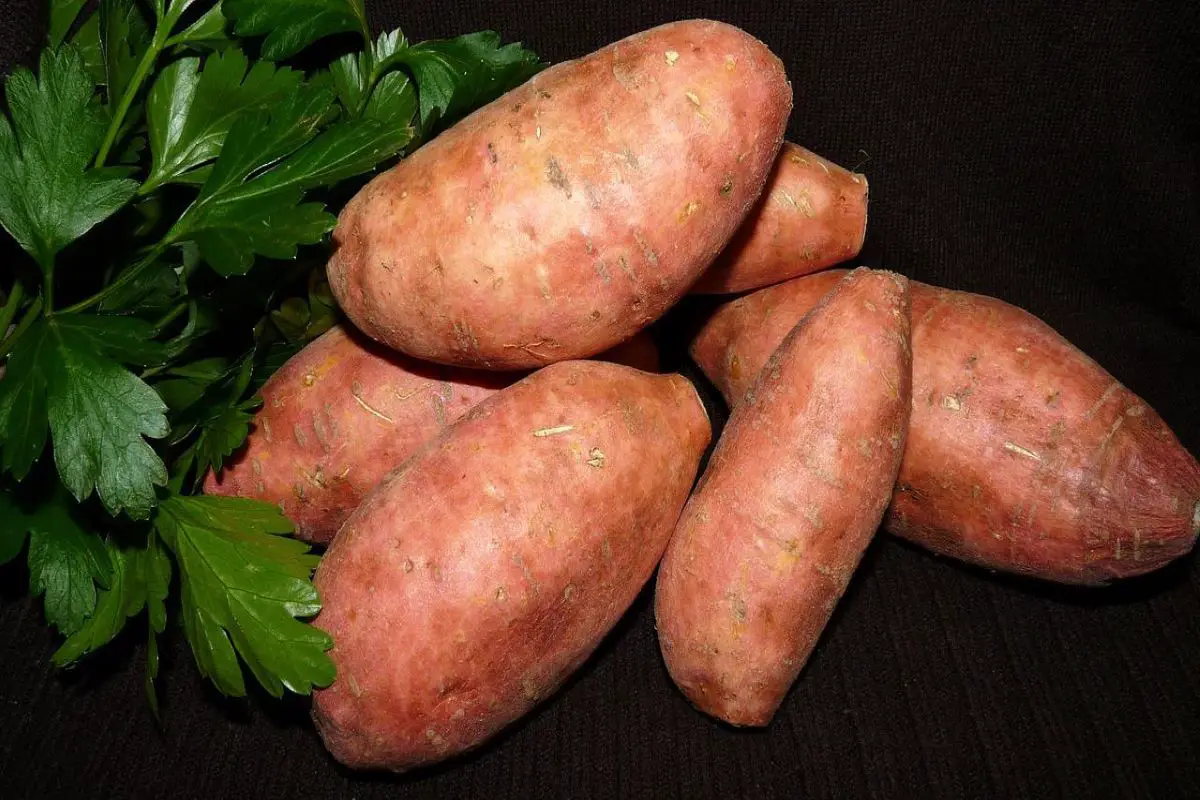A sweet potato is a root vegetable that belongs to the same family as the morning glory. Sweet potatoes are delicious and very healthy for you. There are many varieties of sweet potato such as the yam. You can buy them in any grocery store year-round, but during certain seasons they’re much cheaper to buy at farmer’s markets and roadside stands. Do you want to know how to tell if a sweet potato is bad? Just read this article, and we’ll teach you everything you need to know.
The first step in checking for how to tell if a sweet potato is bad is to look at their skin. If it’s wrinkled or looks shriveled, then your sweet potato is probably old and should be thrown away. The inside of the sweet potato should also be firm, and there should be no soft spots or browning.
If you’ve already cooked your sweet potato and it has become moldy, then it needs to go straight into the trash. There’s no two ways about that.
What Happens To Sweet Potatoes When They Goes Bad?
If you want to learn how to tell if a sweet potato is bad, this section will help you. If you have a sweet potato that has gone bad, it will most likely be covered in mold. You can usually see the mold on the surface of the potato, or near its eyes. If you cut the potato open and notice any black spots or areas of decay, throw it away.
The smell of a sweet potato is also a strong indicator that it has gone bad. If your sweet potato smells like ammonia, sulfur, or rotten eggs, discard it immediately.
If your sweet potato is still firm and fresh-looking but soft to the touch, try peeling off its skin. When the skin starts coming off with ease, the flesh underneath is likely still edible.
How To Store Sweet Potatoes So That They Don’t Go Bad?
If you’re looking for the best way to store your sweet potatoes so they last as long as possible, here’s what you need to know!
Don’t wash them! Just like cucumbers, sweet potatoes don’t need a bath before you pop them into storage. In fact, washing them can lead to mold growth and accelerate deterioration. So just leave them dry until they’re ready to be cooked.
Keep them in a cool, dry place that has good air circulation. Your countertop or pantry is perfect for this. Just make sure that wherever you put them, there’s some space between each one so they don’t come into contact with each other—that can also lead to rot.
If you have a lot of sweet potatoes, keep them in a breathable bag like a paper bag instead of a plastic one, which will trap moisture and make it more likely for your potatoes to spoil faster. And no matter how many or few you have, never store your sweet potatoes in the fridge—they won’t last nearly as long there, and they’ll taste less delicious as well!
Can You Freeze Sweet Potatoes So They Last Longer?
Yes, you can freeze sweet potato. Because sweet potatoes are starchy, you need to ensure that they’re cooked before freezing them.
Sweet potato is a great vegetable to cook in advance and freeze. Not only can it be used in a variety of dishes, but if you keep it frozen, it will last for months until you want to use it. It’s also easy to prepare and cook; just ensure that you don’t cook it too much because it can become mushy when thawed.
Frozen sweet potatoes are best used in dishes like casseroles, soups, and stews where some softness won’t make much difference however you should learn how to tell if a sweet potato is bad so that you eat fresh sweet potato.
Can You Make Sweet Potato Fries If They Have Gone Bad?
Sweet potato fries are one of our favorite snacks, but if they go bad, we want to make sure we can still serve them up! So, what happens when you find that they’ve become slimy or mushy? Can you still make sweet potato fries with them? The answer is: it depends.
If the sweet potatoes are just a little mushy or slimy, you should be able to use them in your recipe after scraping off the parts that have gone bad. If the potatoes have turned brown or black, on the other hand, it’s best to throw them out.
As a rule of thumb, if the potatoes are only slime-adjacent (that is, not actually slimy), you’re probably good to go. If they’re slippery and gross and you don’t feel like dealing with them, though… just pick up some fresh ones.
What Is The Risk Of Consuming Spoilt Sweet Potato?
To avoid spoilage, sweet potatoes should be stored at room temperature and protected from light. The most common cause of spoilage is sweet potato saponin, a natural compound that can decompose into a number of compounds and become toxic. Sweet potato saponin is found in the skin, flesh, and seeds of sweet potatoes.
Sweet potatoes can become contaminated from a variety of sources, including:
- Plants that are treated with pesticide or other chemicals
- Products that are packaged using recycled materials or other materials that pose a risk
- The growth of bacteria in warehouses where sweet potatoes are stored for long periods of time
Consuming spoiled sweet potatoes can result in severe illness or even death.
Conclusion
Although a bit of caution is recommended when dealing with sweet potatoes, this healthy root vegetable is fantastic for you. Make sure to utilize both the skin and the flesh, since they contain different nutrients that are imperative for your health. If you are planning on cooking sweet potatoes, then make sure not to overdo it with the spices. They do have a naturally sweet taste that should be preserved as much as possible.
You May Like These Articles As Well:
 Being Human
Being Human




